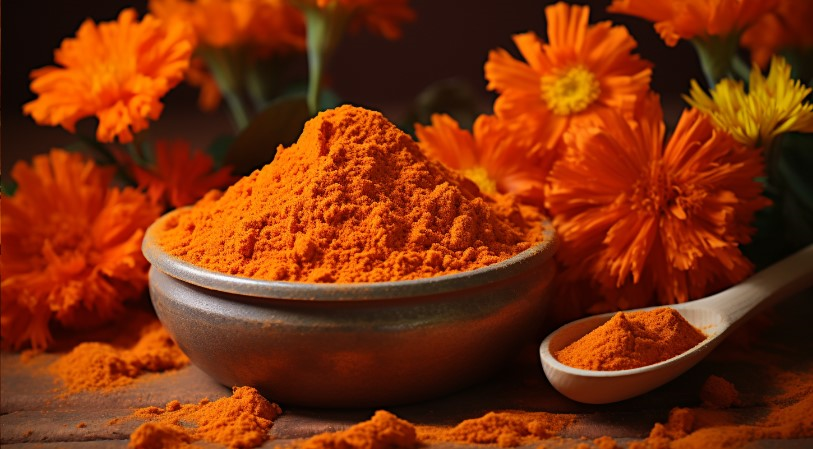루테인 + 지아잔틴, 시력 보호

If you’re familiar with lutein, then you’re probably familiar with zeaxanthin.
사실, 제아잔틴, like lutein, is an important member of the carotenoid family. In the macular area of the retina, zeaxanthin and lutein are the most distributed nutrients and are important components of macular pigments.
The difference between the two is that zeaxanthin is mainly concentrated in the center of the macular area of the retina, while lutein is spread throughout the retina. Research shows that in the central area of the retina, the ratio of lutein to zeaxanthin is 1:2.4; while in the peripheral area of the retina, their ratio is 2:1.
Lutein and zeaxanthin are the only dietary carotenoids that accumulate in the retina. They are particularly concentrated in the macular area of the fundus and are critical for vision.
Extensive research shows that lutein (lutein ester) and zeaxanthin are important for maintaining eye health.
On May 26, 2008, “Ministry of Health Announcement No. 12 of 2008” officially approved lutein esters as a new resource food.
In September 2016, the US FDA confirmed the safety of zeaxanthin widely used in functional foods and beverages.
May 31, 2017. Zeaxanthin was approved as a new food ingredient by the National Health and Family Planning Commission, and its safety has been further affirmed.
Multiple medical studies at home and abroad have shown that zeaxanthin has the following effects:
Anti-oxidant, filter blue light, protect eyesight.
제아잔틴 and lutein have the ability to scavenge reactive oxygen species and are better scavengers of singlet oxygen, that is, they have better antioxidant capabilities. A large number of epidemiological research results show that zeaxanthin has the effect of specifically absorbing blue light, which is the most damaging to the retina. It is a very effective blue light filter that can effectively reduce oxidative damage to the retina and cause damage to the eyes. to a protective effect.
“Lutein and zeaxanthin put on natural “sunglasses” for the retina of the eye” – “Food Industry Technology”. 2015,36(13)
Reduce the risk of AMD (age-related macular degeneration) and delay the progression of AMD
Zeaxanthin and lutein accumulate in the macula of the retina. Due to their antioxidant properties, they can absorb high-energy damaging blue light, which makes them play an important role in preventing AMD.
A study published in the American Journal of Ophthalmology Literature showed that as the concentration of lutein and zeaxanthin in human serum increases from below 0.25 mmol/L to above 0.67 mmol/L, the risk of this disease decreases. More than 60%.
The results of a study by Dr. Landrum even showed that as the concentration of lutein and zeaxanthin in specific areas of the retina increased from 0.031 picomole/square millimeter to 0.135 picomole/square millimeter, the risk of age-related macular degeneration decreased by 82 %.
Reduce risk of age-related cataracts
Research on the oxidative damage model of lens epithelial cells found that intervention with zeaxanthin and lutein can significantly reduce the degree of oxidative damage to lens epithelial cells and protect lens proteins and lipids. It is believed that supplementing 제아잔틴 and lutein can be effective significantly reduce the risk of ARC.
Two other studies published in the American Journal of Clinical Nutrition showed that lutein and zeaxanthin also help reduce the risk of cataracts.
One of the studies followed more than 30,000 American male medical professionals for 8 years. The results showed that compared with men whose intake of lutein and zeaxanthin was only 1.3 mg/day, those whose intake reached The risk of cataracts was reduced by 19% in men taking 6.9 mg/day;
Another study was conducted among more than 50,000 nurses. After 12 years of follow-up monitoring, the researchers found that compared with some women whose intake was only 1.2 mg/day, some women’s intake reached 11.7 mg/day. , the risk of cataracts was reduced by 22%.
Improve diabetic retinopathy (DR)
Diabetic retinopathy (DR) is a common and serious complication of diabetes, which seriously affects the quality of life of diabetic patients. The concentrations of serum lutein and zeaxanthin in DR patients are significantly lower than those in normal people. Studies have shown that after supplementing lutein and zeaxanthin, the concentrations of lutein and zeaxanthin in patients increased significantly, and their vision improved significantly.
“Clinical Application of Lutein and Zeaxanthin in Diabetic Retinopathy” – “New Advances in Ophthalmology”, Volume 30, Issue 9, September 2010.
() ()